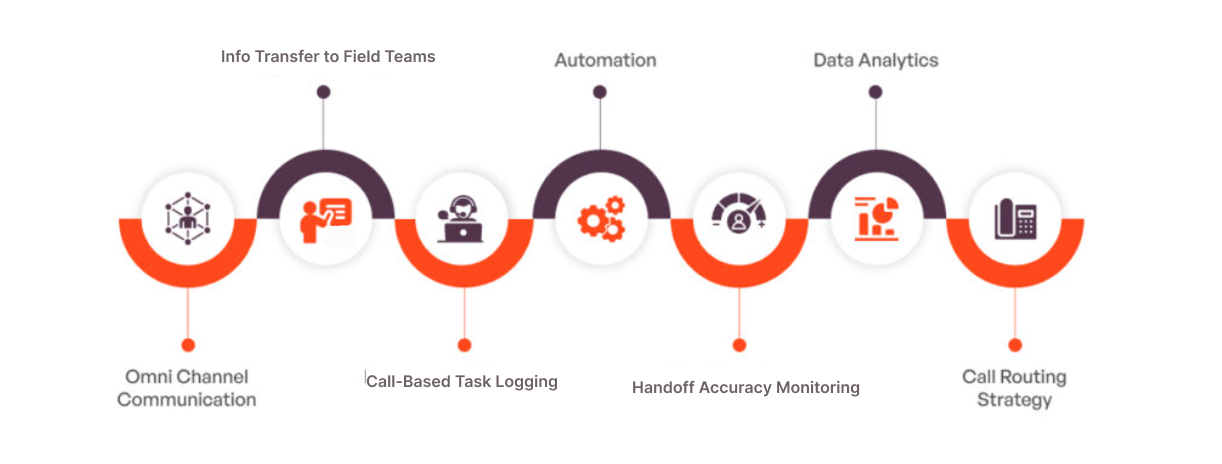
While digital channels like apps and chatbots have gained popularity, phone support remains a cornerstone of customer service. According to a report by Influx, more than 50% of customers across all age groups typically use the phone to reach out to a service team.
However, the challenge isn't with the phone itself it's with what happens after the call. Many call centers operate in silos, disconnected from the tools field teams rely on. This gap often leads to lost context, missed information, and costly repeat visits.
“Customer called. Send a technician.”
There’s no voice recording. No location tag. No clear link to a task.
That means technicians are often walking into the unknown — fixing the wrong thing or coming unprepared.
But when calls are automatically logged with caller ID, timestamps, transcripts, and tied to the right field ticket, the whole chain becomes stronger.
Here’s what an effective, connected call-to-field workflow should look like:

Repeat visits are expensive — and irritating for the customer.
Field Service News reports that failed first visits increase operational costs and hurt customer satisfaction.
The fix? Capture the right data from the first touchpoint: the phone call.
When those calls turn into structured tasks with all the context included, your team shows up prepared — and fixes it the first time.
Phone support is still where service begins — but what happens after that call determines whether it ends in a resolution or a repeat visit. FieldMaster.ai integrated Contact Center helps industries of all kinds convert calls into clear, contextual field actions.
🏭 Manufacturing
Operators reporting equipment issues? The call links to the machine’s service history, creating a task with part requirements and past fault data so technicians arrive fully prepared.
🚚 Logistics
When drivers or customers call about delivery issues, those calls are auto-tagged to the shipment, triggering alerts for dispatch or rerouting without waiting for manual intervention.
🏦 Banking & Finance
Service requests related to ATMs, POS machines, or branch infrastructure are logged securely and linked to site IDs ensuring quick resolution and regulatory compliance.
📡 Telecommunications
From installation requests to complaint calls, everything is converted into structured field tickets, complete with location, caller history, and device data — so engineers know exactly what to fix.
🏘️ Property Management
A tenant reports a broken tap or electrical issue. The system logs the call under the correct unit, auto-generates a task, and notifies the assigned contractor no follow-up needed.
💼 Field Sales
Prospect or client follow-ups become geo-tagged tasks for sales reps — with full call context and CRM linkage, helping them prioritize effectively and close faster.
⚡ Utilities
Outage reports and fault calls are tagged to the grid or zone, logged with caller data and timestamps, and routed to field crews — reducing downtime and repeat inquiries.
Modern call center integrations offer features that streamline operations:
These features eliminate the need for agents to toggle between tabs and prevent technicians from being uninformed about customer interactions.
If your team still relies on scribbled notes or verbal summaries, you're not capturing the full picture. And when the field team doesn't have the full picture, issues can escalate.
A connected system doesn't just log the call—it initiates the solution. By ensuring every phone call becomes a clear, contextual task, businesses can enhance efficiency, reduce repeat visits, and improve customer satisfaction.
In field service, understanding "what the customer said" should never be a mystery.